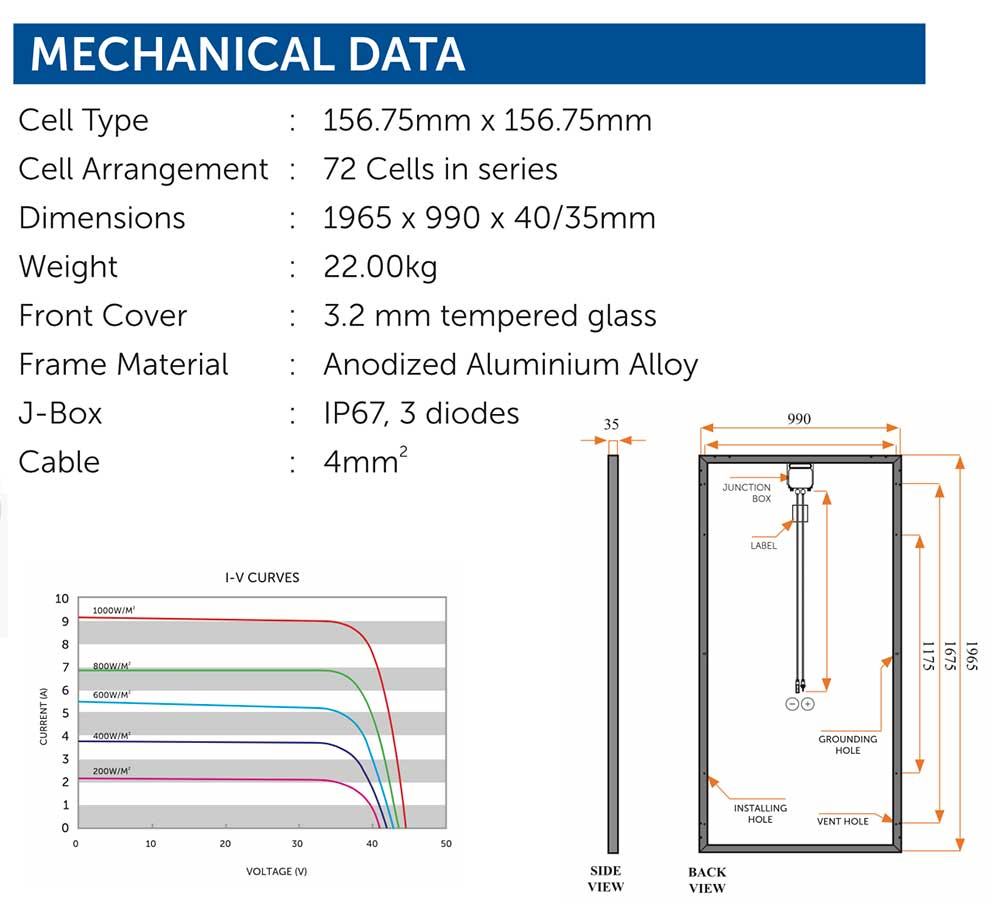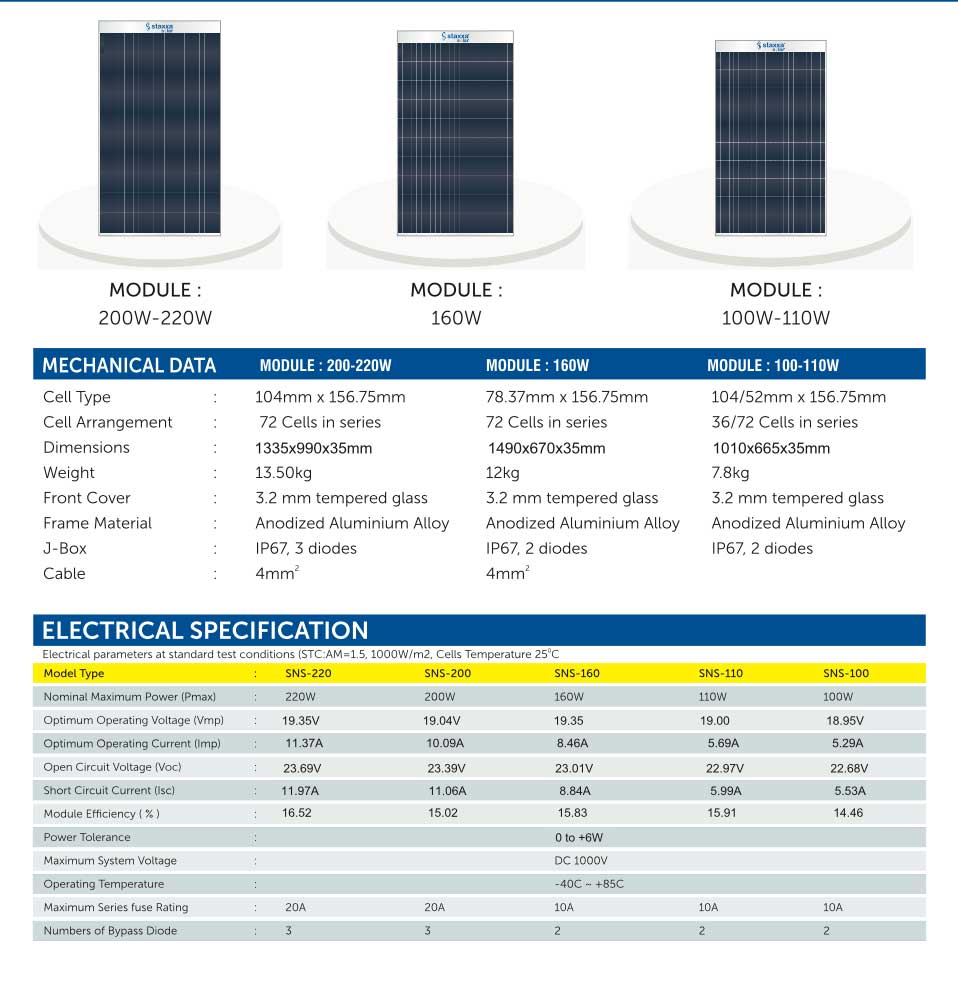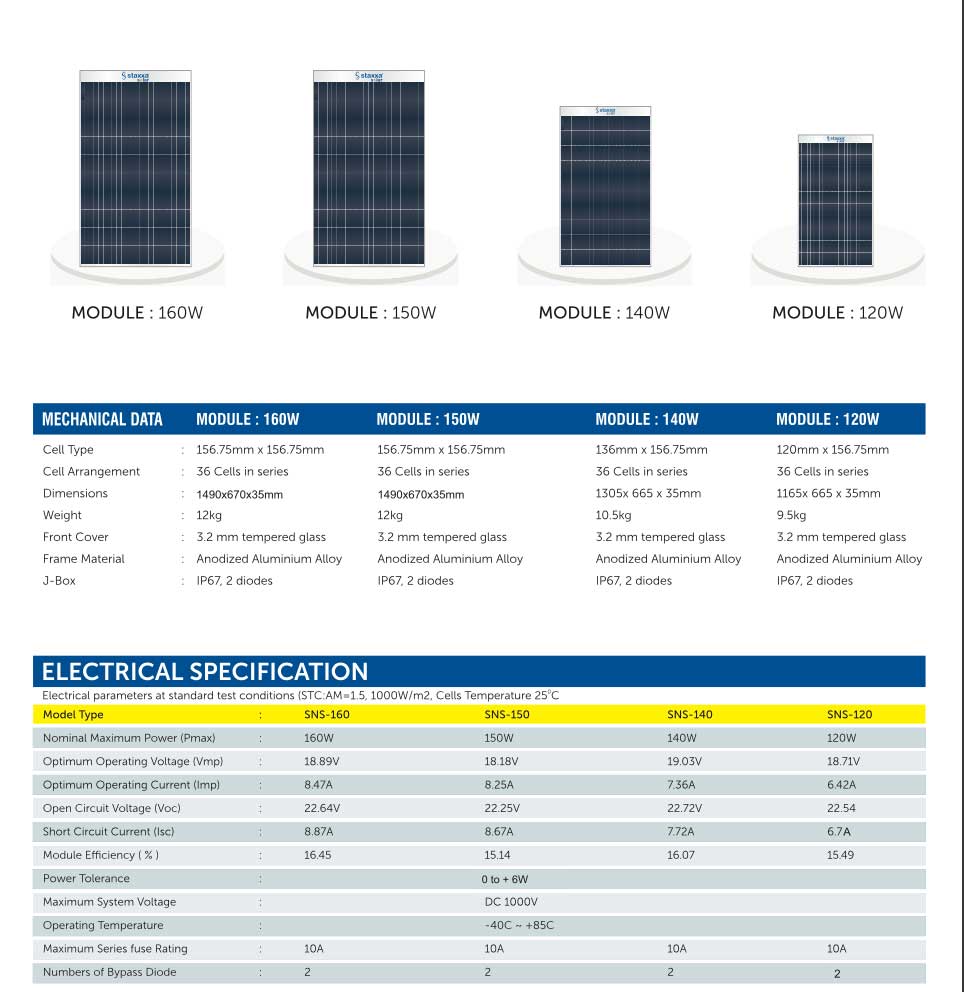- MON - SAT : 8:00AM - 7:00 PM
- info@staxxasolar.com
- 1800-891-3910
- Vill. Bhatoli Kalan, Baddi, Solan, Himachal Pradesh-173205

300Wp-350Wp(72 Cells)
40Wp-260Wp(60 cells)
Get in touch with us
Latest Catalog
PolyCrystalline or MultiCrystalline solar panels are solar panels that consist of several crystals of silicon in a single PV cell. Several fragments of silicon are melted together to form the wafers of polycrystalline solar panels. In the case of polycrystalline solar panels, the vat of molten silicon used to produce the cells is allowed to cool on the panel itself. These solar panels have a surface that looks like a mosaic. These solar panels are square in shape and they have a shining blue hue as they are made up of several crystals of silicon. As there are multiple silicon crystals in each cell, so polycrystalline solar panels allow little movement of electrons inside the cells. These solar panels absorb energy from the sun and convert it into electricity.




